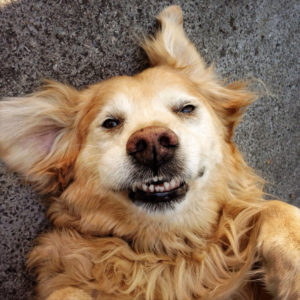Helping Dog To Adjust New Home. Dogs like to feel like they are in control, so the first few days following a major move are crucial to take things slow. It can be tempting to want to shower your dog with attention and affection because he’s feeling overwhelmed. But this is not helpful at all. Instead, focus on feedings throughout the day for several days, provide comfort by sitting near him for a bit, and wait until he starts finding his way around.
Let new dog explore on his own
If you are giving a new dog a lot of attention, it will become fearful and may not want to explore on its own. This can lead to destructive behavior in the home. For this reason, it’s important to allow the new dog plenty of time to explore on his own before you go over to meet him.
You should also understand that the new dog may not interact with you at first. This is normal after a huge change in his life, so make sure to be patient. When the dog does feel comfortable, he will come to you and show affection.
Be gentle when petting a new dog
It may be tempting to run over to your new dog and rub it all over him when he first arrives in his new home. However, this is likely to scare the dog and cause him to not want any human contact whatsoever. Instead, try reaching out slowly so that the dog can get used to being touched. Even better, give the dog space for a while before going over and talking directly to it.
Give the new dog time to adjust
There are many reasons why the new dog may not want to play right away. This could be because he is tired or scared after his long journey. You should make sure that he has enough space to come out of his kennel at his own pace. If you see him, walk slowly over to him and let him sniff you before petting. This will help him get used to his new home and you.
Don’t force the dog outside the house
It is best not to push your new dog out of the house too soon after he arrives in his new home. Let him explore on his own and use the bathroom in a place that feels safe for him, such as an indoor potty area or kennel. If you push him to go outside before he’s ready, it could make things worse by causing fear and anxiety.
Don’t force the dog to go inside the house
If you encourage your new dog to go inside the house too soon, he might feel like he has to be close to you at all times, which could lead to anxiety later. It’s best not to make him come in unless he chooses on his own. You should also keep in mind that some dogs may never want to enter the home on their own, but this doesn’t mean they won’t adjust eventually.
Give plenty of treats
Make sure you have treats on hand at all times for your new dog. This is because dogs cannot speak our language nor
Don’t force interactions
Even if the new dog seems excited to meet you, don’t force interactions. The best thing to do is let the new dog sniff your hand and then go away for an hour or so before coming back. Then, repeat this process until the new dog becomes comfortable around you. If you try to rush things by forcing interactions, it will only cause more anxiety in the dog and he could become aggressive as well. Remember that dogs communicate through body language, so if they showing signs of discomfort or aggression, respect this.
Plan the dog’s routine
Don’t try to plan out your day with your new dog right away. Your new pet doesn’t know anything about his surroundings yet, what time people eat meals or go to sleep, etc. It’s best if you let him explore on his own and form his own daily routine. If you force things too soon, it could lead to more anxiety for the dog which will make adjusting more difficult.
Take a break from socializing
Sometimes dogs can become overwhelmed when meeting new people or going out in public places after a large change in their life. This is why it may be a good idea not to force interactions until they feel more comfortable. You can still interact with the dog, but try to do so in a quiet area where he won’t feel overwhelmed by too many new things at once.
Introduce children gradually
Don’t let kids run right up to your new dog or pet him without letting him get comfortable first. You may want to keep young children away from the dog for a while until you know how he is around them. If possible, have someone watch the dog and child play together for a while before letting them get close to each other on their own. It’s also important to teach your children what appropriate behavior is towards dogs and how they should act when in the presence of one. Behavior such as pulling his tail or ears could be seen as a threat to the dog and he may become defensive which could lead to your child getting hurt.
Have patience
It’s important to be patient when introducing your new pet to his new home and surroundings. This means not forcing interactions before the dog is ready, listening if he shows discomfort or aggression, etc. If you rush things too soon, it can only cause more anxiety for the dog and make things worse than they need to be. Remember that dogs communicate with their bodies so if they are showing signs of fear or anxiety do not ignore this. It is also very important that you let your children know what appropriate behavior towards dogs is in order for everyone in the household to stay safe.
Canine companion
Here is a good chance that you are on the lookout for advice about how to make your dog adjust to its new home. Before you can begin to introduce them to their new living environment, it is important that they first spend some time adjusting on their own. A dog who has not yet entered into his new home will likely experience anxiety and stress when he finally does enter it. For this reason, it is crucial that you follow these steps in order to acclimate him before letting him loose.
1) Allow your dog time to explore their new surroundings freely without any contact from you or anyone else until they have had enough time to get used to the area entirely. This might take anywhere from 30 minutes to an hour.
2) During the time your dog is allowed to explore on their own, you will want to refrain from petting them as much as possible. On top of this, it is important that you do not converse with them at length either. This will allow your dog a chance to calm down and settle into their surroundings without feeling overstimulated by you or anyone else in the house. Meeting too many new faces all at once can be a lot for a new canine companion to handle and this is why it is recommended that they spend some time alone before being bombarded with the company.
3) Once your dog has had enough time exploring independently, you should take him outside one final time for elimination purposes. When he is finished, you can bring him back inside and allow him to stay there for another thirty minutes.
4) After the time has passed, it would be a good idea to set out a pan of food and some water so your dog may eat and drink after such an active day. If he isn’t interested in eating or drinking at this point, then that is fine as well. You will want to refrain from interrupting his relaxation as much as possible during this time period as it can take them half an hour to forty-five minutes before they decide whether or not they are hungry enough to eat.
5) After 45 more minutes have passed, you should try introducing your canine companion over to his kennel if he doesn’t seem to be interested in remaining out of it. A kennel is a good way for your dog to feel secure and comforted around you. This presence can be soothing for them as they adjust to their new environment.
6) Once the time has passed, you should bring him back outside one final time so he may eliminate before heading inside for the night with his new family.
The physical and mental health of the pet dog
Encouraging physical and mental health can be a lot to handle for pet owners. Owning a dog that has not been trained and is physically and mentally healthy can take dedication and effort in order to maintain it. Here are some ways in which you can start this process:
-The first thing you’ll want to do is make sure the dog gets plenty of exercises. The owner needs to set aside sufficient time each day for the dog’s walks and playtime. When an owner starts their day by putting their dog’s needs first, it will become easier to maintain throughout the rest of the day.
-The second thing an owner should focus on is his diet. By making sure the food matches his dietary needs, you will. This includes getting walked for at least an hour every day. If you don’t have the time to walk your dog, then consider enrolling with a local doggie daycare where they may play all day.
-The second thing you’ll want to do is provide them with plenty of toys and entertainment so they don’t get bored throughout the course of their day. If they are not adequately engaged in their surroundings, they will find whatever means possible to entertain themselves whether it be chewing on your shoes or eating your couch cushions.
-The third thing you should ensure is that you start early in training programs. When dogs reach immature stages (3 months old until 2 years old), this is when most states recognize that they are able to start being trained. It is also the perfect time because by starting early, you are setting your dog up for success later on down the road.
-The fourth thing to look into is getting your dog spayed/neutered as soon as possible. This will reduce their chances of marking throughout their home and decrease their chances at developing cancer or other diseases that may be caused by overbreeding. You can find a reputable pet rescue or shelter to work with if you don’t want to go through a breeder. They can provide you with all of the information needed to set up an appointment for these procedures, which are typically done between 3-6 months old depending on the organization itself.
Responsible pet ownership
A significant responsibility that comes with pet ownership is ensuring that your new dog or dog puppy will adjust to their new environment. Helping your canine companion adjust to their new home can be difficult and time-consuming. To make this process easier for you, here are some simple things you can do to help your companion adjust quickly.
Leave Them Alone: Your pet does not need constant attention when they are in their crate or in an area they have just been introduced to. Acknowledging them briefly before leaving is sufficient.
Give Them Plenty of Toys: Dogs need plenty of toys so they have something to keep themselves entertained when you are busy doing other things. These toys can also serve as a comforting tool during the adjustment period if your dog is scared or anxious, which helps them adjust to their new environment.
House Training: Make sure they are taken outside the moment they wake up until the moment before you go to bed so that they can use the restroom at those times. Many dogs urinate with excitement when seeing their owner awake in the morning, so this will help train them to go outside instead of inside.
Provide Plenty of Food and Water: Ensure your pet has access to food and water throughout the day since many may become stressed during this time. Also, ensure there is fresh water available for your canine companion at all times
Give Plenty of Back Rubs: Back rubs often provide comfort for both humans and pets alike because it allows them an opportunity to relax, which is a good thing for your pet’s mental health.
Training: Your dog should be taken to a training program as soon as possible so they can learn basic commands and receive the affection they need from you at the same time. Proper training is vital throughout life no matter who or what you are training.
Dog ownership
Dogs are one of the most popular pets in the world. There are over 400 million dogs all across the planet. Dogs make excellent pets because they are intelligent, loyal, and friendly. They also require little maintenance to live well indoors or out. The only downside of dog ownership is that it takes a lot of time to train them because they can be challenging at times. If you have just adopted a new pet, here are some ways you can help your puppy adjust to his new home.
Unconditional love with a pet dog
You should find out the dog’s earliest memories and what it liked and disliked. You should also consider what would make your home the best place to be, such as giving it a favorite toy or asking for its help in making a scrapbook of its life. Once you have done this, you can show the dog that you love it unconditionally and will do anything for its happiness.
Puppy’s life history
The dog’s earliest memories are of being left in a crate by its owner. It was fed twice a day and let out once daily at the same time, but otherwise felt alone and frightened. The dog wants its new family to know that if they want it to be happy, they should make sure to take it on walks every day and cuddle with it for as long as is needed each night before they go to sleep. If you can help the dog adjust quickly, there will be no need for time-outs after you leave or when you come home; this will also prevent it from chewing or scratching doors or furniture.
Desired information about the pet’s life
This is a list of the dog’s earliest memories. When you feel that you have bonded with your pet, go back to these memories and see if they bring up any new feelings about how it felt during those experiences. In doing so, you will better understand your dog and be able to show it, unconditional love.
1. The earliest memory was of being left in a crate by its owner for most of the day. This made the dog feel lonely and frightened, but also sad because it knew that its owner didn’t want it anymore. 2. The second earliest memory was of being beaten whenever it did something wrong, such as chewing on a chair leg or playing with shoelaces. As a result, the dog learned that it couldn’t trust its master. 3. The third earliest memory was of being given away for a walk by the same person who hurt it previously, then eventually being brought back and left in that crate again. This made the dog feel completely alone in the world.
4. Its fourth earliest memory was of a particularly hot day when its owner left a bowl of water out for it but never came back to see if it drank any or not. The dog had been very thirsty throughout the day, but this kindness from its owner convinced it not to give up hope on finding love somewhere else someday soon.
5. As far as likes and dislikes go, the dog’s favorite things include making new friends and exploring new smells and tastes.

